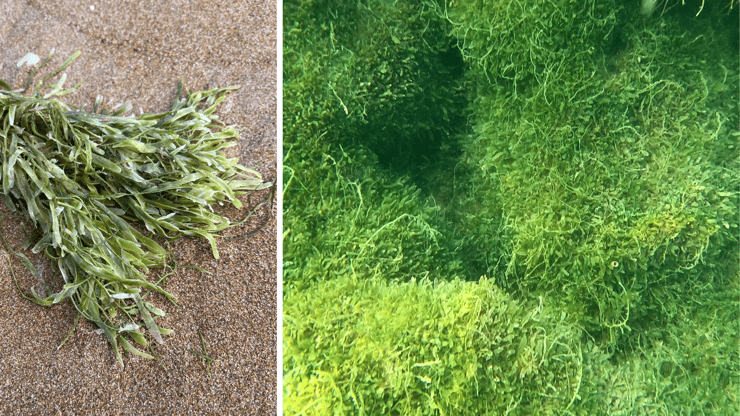Have You Seen This Pest In NZ? Be A Marine Hero

New Zealand’s coastline is under threat, and the enemy is a stealthy green invader. Exotic caulerpa—an aggressive marine weed—is infiltrating New Zealand's waters, and authorities are calling on everyday heroes to stop its spread. Beachgoers, snorkelers, and seaside spies, this is your mission: spot it, report it, and save the sea.
Auckland Council, the Ministry for Primary Industries (MPI) and regional partners are doubling down on efforts to contain this underwater menace. The battlefront stretches across the Hauraki Gulf, Bay of Islands, and Coromandel, where caulerpa is creeping over the seafloor, smothering native marine life, and threatening its ecosystems.
Eyes on the enemy
Auckland Mayor Wayne Brown knows the stakes are high.“It is good to see reminders going out to boaties—now it’s up to us to make sure we help prevent the spread of this nasty weed and protect our treasured marine environments for everyone.” 
Councillor Richard Hills, Chair of Auckland Council’s Policy and Planning Committee, is urging vigilance. “This is not just about following rules; it’s about protecting the places we love to visit, fish, and play. If we don’t act responsibly, we risk losing access to some of our most treasured marine environments.”
The Invasion so far
Caulerpa has already set up base in key locations, including:
Hauraki Gulf: Kawau Island, Waiheke Island (Onetangi Bay/Thompson Point), Rakino Island, Aotea/Great Barrier Island, Mokohinau Islands.
Bay of Islands & Coromandel: Fantail Bay, Great Mercury Island/Ahuahu.
Authorities have issued Controlled Area Notices (CANs) for Aotea/Great Barrier Island, Ahuahu/Great Mercury, and the Bay of Islands, with new restrictions rolling out for Waiheke Island.
Your mission briefing
To stop caulerpa’s advance, follow these orders:
🔎 Be a seaweed spy: If you see unusual seaweed, take a photo and report it to MPI at 0800 80 99 66.
🚫 Don’t move the enemy: If you find caulerpa, bag it and bin it—or return it to the same spot. Never take it to a new location.
🧹 Keep your gear clean: Check and clean your beach toys, snorkels, and fishing gear before heading to a new beach.
What’s at stake?
If this mission fails, we risk:
❌ Losing access to our favourite coastal spots.
❌ Devastating marine biodiversity, affecting fish, shellfish, and underwater habitats.
❌ The enemy spreading further south, making containment even harder.
Councillor Hills warns: “Right now, prevention is our only weapon. We’re working with scientists, iwi, and communities to find long-term solutions, but the best defence is stopping caulerpa in its tracks.
“Removing large-scale caulerpa infestations is currently not feasible. Although we are leaning on research and development for solutions, prevention is the only viable option right now,” he said.”
Recruits in the field
This summer, environmental ambassadors will be stationed at beaches and boat ramps, ready to assist the public. So, if you need a briefing—or just want to be part of the mission—keep an eye out for them.
The ocean needs heroes. Are you in?



